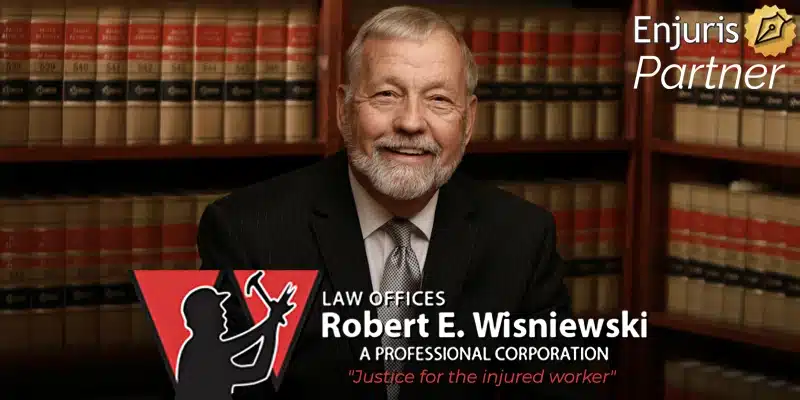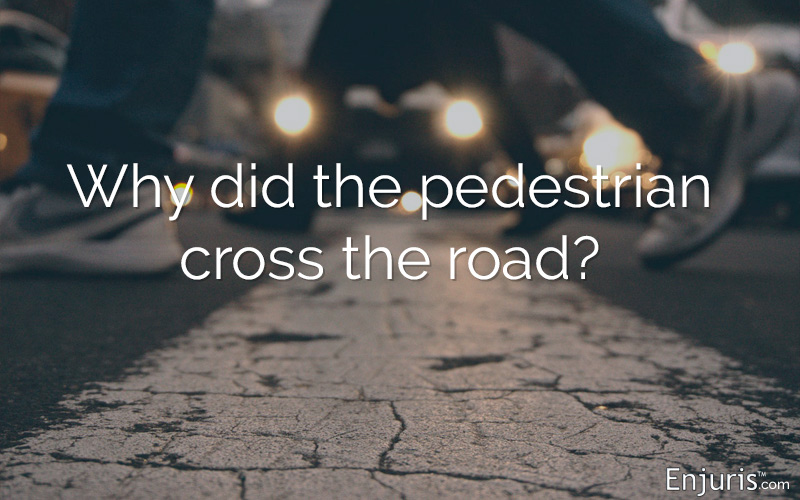Understanding fault and your recovery options when an accident involves a pedestrian
In Arizona, where the skies are blue and the natural scenery is awe inspiring, pedestrians are plentiful. Unfortunately, Arizona has the highest rate of pedestrian deaths in the nation and is widely recognized as one of the most dangerous states to travel on foot.
This article explores some of the causes of pedestrian accidents, the laws impacting pedestrians in Arizona, and the damages that might be available in a pedestrian accident.
Pedestrian accident statistics
In Arizona, the term “pedestrian” doesn’t just refer to people walking on foot. It also refers to runners and people in manual or motorized wheelchairs.
In 2017 (the most recent year for which the data is available), 226 pedestrians were killed in Arizona. At a rate of 1.61 pedestrian deaths per 100,000 people, Arizona’s pedestrian-fatality rate is more than double the national average of 0.8 per 100,000. Interestingly, almost 3 times as many male pedestrians were killed in Arizona in 2017 than female pedestrians.
An additional 1,510 pedestrians suffered non-fatal injuries in 2017.
The vast majority of pedestrian accidents occurred in urban areas (with most occurring in Maricopa County and the Phoenix metropolitan area).
Causes of pedestrian accidents in Arizona
As you can see from the chart below, most pedestrian fatalities and injuries occurred when pedestrians were crossing the road:
| Causes of Pedestrian Accidents in Arizona (2017) | ||
|---|---|---|
| Pedestrian Action | Pedestrians Killed | Pedestrians Injured |
| Crossing Road | 124 | 939 |
| Walking With Traffic | 6 | 94 |
| Walking Against Traffic | 7 | 102 |
| Standing | 11 | 95 |
| Lying | 7 | 7 |
| Getting on/off Vehicle | 0 | 13 |
| Working on/off Vehicle | 0 | 17 |
| Pushing Vehicle | 3 | 17 |
| Working on Road | 0 | 16 |
| Other | 17 | 165 |
| Unknown | 51 | 62 |
| TOTAL | 226 | 1,510 |
| Source: Arizona Department of Transportation: Motor Vehicle Crash Facts 2017 | ||
Additionally, the majority of pedestrians (65.4%) were NOT under the influence of drugs or alcohol at the time of the accident:
| Intoxication Factors in Arizona Pedestrian Accidents (2017) | ||
|---|---|---|
| Type of Condition | Total Injuries and Fatalities | Percent of Total |
| No Apparent Influence | 1,174 | 65.40% |
| Alcohol | 197 | 10.97% |
| Illegal Drugs | 44 | 2.45% |
| Medications | 1 | 0.06% |
| Illness or Physical Impairment | 11 | 0.61% |
| Other | 6 | 0.33% |
| Unknown | 362 | 20.17% |
| TOTAL | 1,795 | 100.00% |
| Source: Arizona Department of Transportation: Motor Vehicle Crash Facts 2017 | ||
Finally, weather conditions and time of day don’t appear to play much of a factor in pedestrian accidents in Arizona, as the vast majority of injuries occurred during the day when light conditions were clear.
Arizona laws regarding pedestrian accidents
Arizona law requires drivers to exercise due care to avoid colliding with a pedestrian. In addition, all drivers in Arizona are required to:
- Yield to pedestrians crossing the roadway within a crosswalk
- Avoid passing another vehicle when that vehicle is stopped at a crosswalk
- Avoid passing a school bus when its stop sign is extended and its lights are flashing
- Reduce their speed to no greater than 15 miles per hour when travelling through a school zone
Arizona also imposes a number of laws on pedestrians:
- Pedestrians must follow traffic control signals at intersections
- When between adjacent intersections at which traffic control signals are in operation, pedestrians must not cross at any place except in a marked crosswalk
- Pedestrians must yield the right-of-way to all vehicles when not at a crosswalk
- Pedestrians must move expeditiously when possible on the right half of the crosswalk
- Pedestrian must not suddenly walk or run into the path of a vehicle
- Pedestrians must not walk on a roadway when a sidewalk is available
- If a sidewalk isn’t provided, a pedestrian must walk on the left side of the road or its shoulder facing traffic
Fault in pedestrian accidents
As mentioned above, all drivers have a legal duty to drive with reasonable care and to obey all traffic laws. If a driver breaches that duty and the breach causes an accident, the driver can be sued for negligence.
Pedestrians also have a duty to exercise reasonable care while navigating Arizona’s roads. Just like a driver, if a pedestrian breaches their duty of care (for example, by running out into the middle of the road), the pedestrian can be sued for negligence.
In some cases, the driver and the pedestrian might both be at fault for an accident. What happens then?
Arizona follows the pure comparative fault theory. Under this theory, the amount of damages a plaintiff can recover is reduced by a percentage that reflects the plaintiff’s degree of fault – no matter what that percentage may be.
Let’s look at an example:
John is driving his truck along the road and texting his wife. At the same time, Susan starts to cross the road, despite an absence of a crosswalk. Because John is texting, he doesn’t see Susan and he hits her with his truck. Susan sues John and the court determines that John was 80% at fault for the accident, while Susan was 20% at fault.
In the above scenario, Susan would only be able to recover 80% of her damages due to Arizona’s pure comparative fault laws.
What damages are available in a pedestrian accident?
When a pedestrian is struck by a motor vehicle, they have no airbags, seatbelts, or steel cages to lessen the impact. As a result, pedestrian accidents can be extremely serious and often fatal. Some common injuries include:
- Traumatic brain injuries
- Spinal cord injuries
- Soft tissue injuries
- Broken bones
- Death
Pedestrians can be compensated for the economic damages (medical expenses and lost wages) caused by the accident, as well as the non-economic damages (pain and suffering).
In addition, a pedestrian might be able to recover punitive damages if the driver’s actions were intentional or particularly outrageous.
Drivers can also recover economic damages, non-economic damages, and punitive damages if they crashed trying to avoid a pedestrian, which resulted in serious injury or damage. In most cases, given the nature of pedestrian-motor vehicle collisions, the driver will recover property damage.
Staying safe and preventing pedestrian accidents
To avoid pedestrian accidents, both drivers and pedestrians should follow all traffic laws and practice caution when navigating high-risk areas (such as school zones, neighborhoods and busy urban areas). In addition, although Arizona law doesn’t require it, pedestrians should consider wearing bright colors and reflective gear at night.
In the hopes of reducing the amount of pedestrian accidents in Arizona, the Governor’s Office of Highway Safety recently accepted a $793,250 grant from the National Highway Traffic Safety Administration for pedestrian and bicyclist law enforcement and education efforts.
If you’re involved in a pedestrian accident (either as the pedestrian or the driver), it’s a good idea to contact an attorney to ensure you recover all of the damages available to you. Use our free online directory to find an Arizona attorney where you live.
See our guide Choosing a personal injury attorney.


